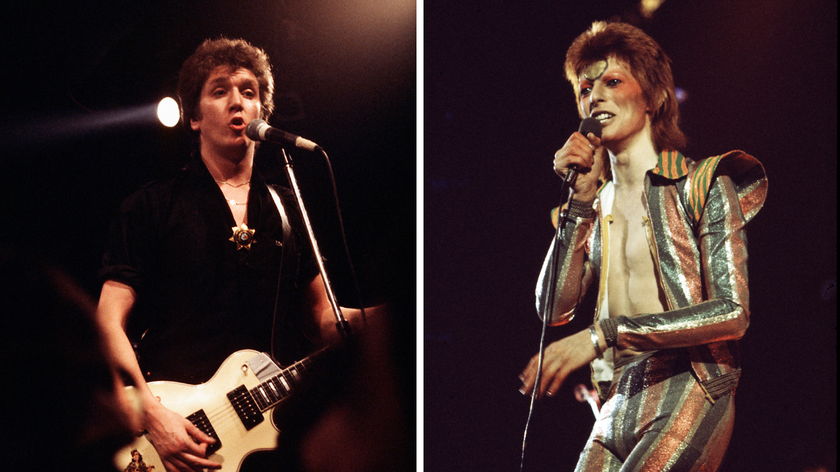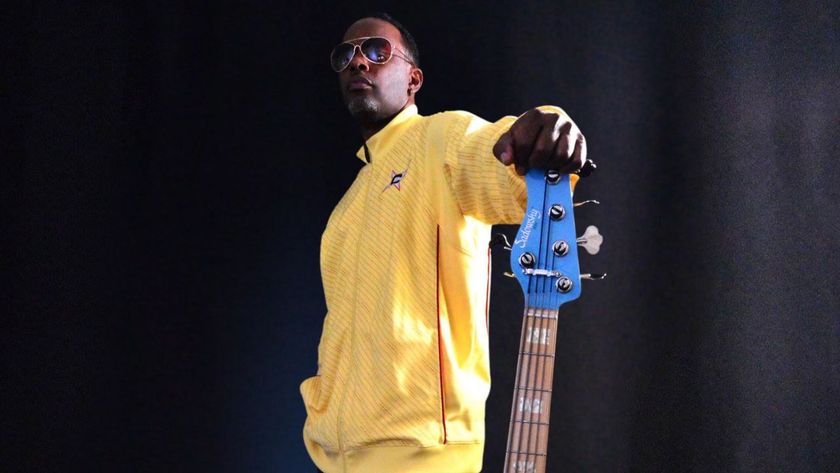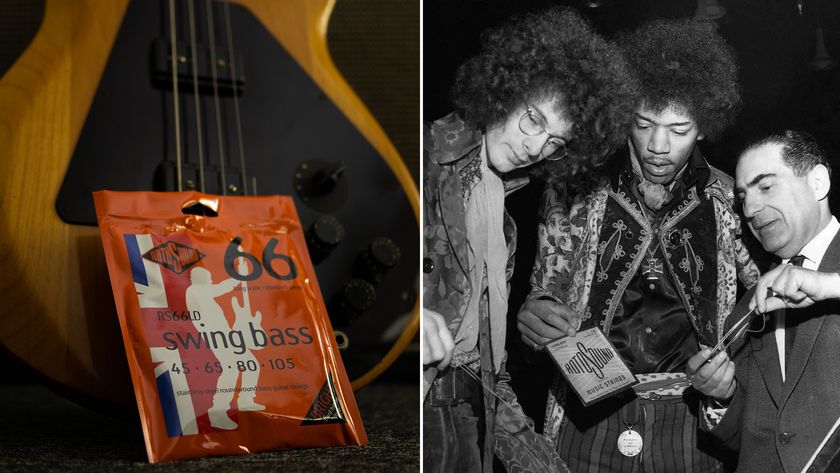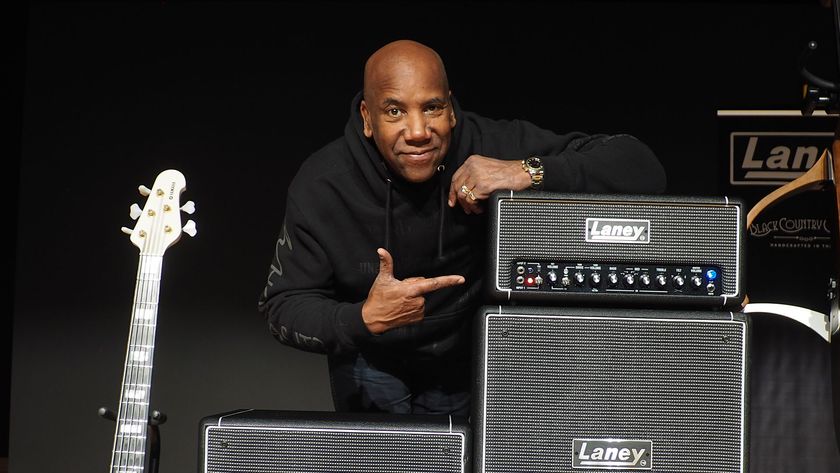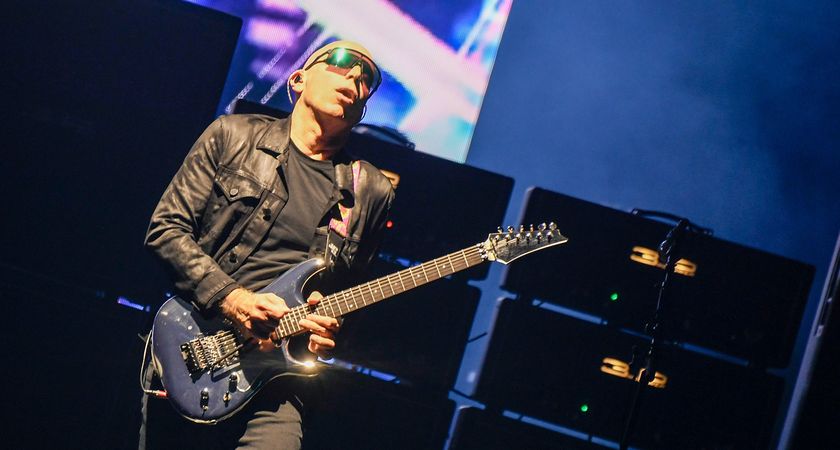Interview: Wayne Krantz Discusses His New Album, 'Howie 61'
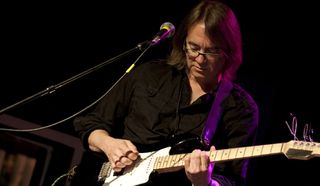
When it comes to his musical influences, Wayne Krantz takes an approach to the guitar that is at once counter-intuitive and wholly original. “My sound has always been a reaction against the guitar players that were of greatest importance to me,” says the Oregon native and New York City–based guitarist. “My playing was shaped by an intentional step away from the influences that I’d had up to the time that I got really serious about playing, because I realized that the lesson all of those guys were teaching me was to not be like them—the whole point was to try to find my own thing. So I realized I couldn’t go on expressing my love for them through my playing anymore, and I had to begin a search for something else.”
The result is that Krantz has developed an entirely individual and instantly recognizable sound. He does this by communicating an extremely broad blend of melodic, harmonic and rhythmic information simultaneously, in a manner that is both seamlessly effortless and completely organic.
Krantz’s latest release is Howie 61, his new album for the Abstract Logix label and ninth as a bandleader. Unlike Krantz’s previous albums, most of which have a specific guitar-bass-and-drums lineup, Howie 61 features a wide array of rhythm-section players. Bassists on the album include Pino Palladino (Jeff Beck, Eric Clapton) and John Patitucci (Chick Corea, Herbie Hancock), while drummers comprise Anton Fig (David Letterman), Vinnie Colaiuta (Jeff Beck, Frank Zappa) and longtime Krantz compatriot Keith Carlock, among others.
Guitar World caught up with Krantz—who also debuts his Guitar World instructional column this month—to discuss this wide-ranging, ambitious new album.
Compared to your other albums, Howie 61 is unique in that it features a different lineup on almost every song and you sing on eight of its 10 tracks. How did this disc come together?
Going into this project, I knew I didn’t want to make another “group” record, because every record since 1991’s Signals has been a group record. I’d been an independent record maker starting with 2000’s Greenwich Mean, and my return to an actual label was 2009’s Krantz Carlock Lefebvre [a.k.a. KCL] on Abstract Logix, and they’ve been great to work with. I knew I wanted to do a lot of singing on this one, so access to a good studio was essential for the recording. Virtually all of the tracks were written specifically for this record, with the exceptions of “Son of a Scientist” and “beLls,” which I had pieces of for some time.
Though it’s mostly instrumental, there are some vocal tracks on KCL, such as “It’s No Fun Not to Like Pop,” “Wine Is the Thread” and “I Was Like.”
Get The Pick Newsletter
All the latest guitar news, interviews, lessons, reviews, deals and more, direct to your inbox!
KCL represents the first time I figured out how to have singing as a part of the music, and with Howie 61 a goal was to take the concept much further. I’d been trying to make that happen for a long time, and it took a while to find a way to do it that worked for me. The sound of a voice with a guitar-bass-drums trio is a classic sound—Jimi Hendrix, Cream, Led Zeppelin and the Who, as well as the Police, are all good examples of that. The vocals are part of what makes it complete.
The title track on Howie 61 is a take-off on Bob Dylan’s “Highway 61 Revisited,” albeit in a pretty twisted manner.
Yes, it is. One of the first things to address when writing lyrics is what the song is going to be about. At first, I thought the lyrics would have to be about love, politics or sex. But as I worked through the process, I realized, much to my surprise, that an element of humor could be an integral part of the lyrical content, not in an obvious way but as a part of the vibe. My main goal was to integrate the music with the singing so that neither one was more important than the other.
I think about wordplay all the time, and “Howie 61” as a play on words came to me. I thought, What would a song called “Howie 61” be about? and that helped steer me in a direction for writing the words. That resulted in a similar kind of “wordiness” that you find with Bob’s records. And, curiously enough, the form of “Howie 61” mirrors that of Dylan’s “Highway 61,” too.
Who are some of the guitar players that you count as primary influences?
- At the start, I was heavily into California and English rock, but initially I didn’t distinguish the guitar as being of the greatest significance. It was the overall vibe of the music that I was most taken by, and it wasn’t until I started listening to jazz a little later that I became more aware of an individual instrumentalist’s excellence or signature sound. I think that’s part of the reason why the sound of a band has always been so important to me—that’s where the power is, the thing that transcends how well one of the guys in the band plays.
- The only exceptions to that, for me, are Jimi Hendrix as well as a guitar player named Terry Haggerty, who played with the Sons of Champlin and was one of my first guitar heroes. Haggerty was basically a jazz player playing in a funk band. Those guys were different to me, because it was their playing that made the thing happen. But I like the guitar when it isn’t the focus, too; I like it when it’s just a part of the sound. As a teenager, I loved Hendrix, Led Zeppelin, Jethro Tull and Santana. When I got into jazz, it was John McLaughlin, George Benson, Jim Hall and Joe Pass.
Did you see John McLaughlin’s Mahavishnu Orchestra back in the early days, around 1973?
I did. I saw them in Portland that year while I was still in high school. That was a life-changing event. They started with “Meeting of the Spirits…” I will never forget that moment. It was incredible. And because nobody in Portland or Corvallis—where I’m from—or Oregon period had any idea of the world that that music came from, at the end of that concert there was dead silence! No one said anything. They just quietly stood up and filed out! [laughs]
From that first Mahavishnu album, the song “Noonward Race” featured intense guitar-and-drums interplay, which is something you have explored to a great extent in virtually all of your records.
That is true, but I honestly feel that that sort of free-improv between the drums and guitar was one of my least favorite things about that music. I became so in touch with rhythm and the guitar-drums rhythmic connection through R&B, and as a guitarist, the “soul” of that starts with the drums.
As my music has evolved rhythmically, so has the drumming, moving beyond straight groove playing. And that musical connection between the instruments is formed more by how the music is built, which is on a grid that is, rhythmically speaking, in a very consistent place. Mahavishnu were coming from much more of a jazz-style organization, with a certain looseness in the rhythmic grid, whereas my music makes its connection to R&B in the shared rhythmic placement of each instrument’s input. It’s really important to me that we are playing the beat in the same place, and any fluctuation from that seems to me like a flaw.
Can you talk about the contributions of the specific players you’ve been closely associated with, such as drummer Keith Carlock?
I’m lucky, because I’ve found a small handful of guys that can connect together in the way that I need them to. Keith is great for many reasons, but one is that he always keeps the groove angle intact, because that’s where he’s coming from. With all of his incredible technical ability, at heart he’s an exceptional groove player, and he makes sure that that’s never far away from what we’re doing. With the music we play, it’s very easy to get fairly abstract, but I’m not a fan of that. I don’t strive for abstraction; I strive for clarity and simplicity. I’m trying to focus abstract ideas into understandable formats so people can get it. I have no desire to leave anyone in the dust—I want everyone to come along with me. Carlock is a great conduit for that. In the midst of breaking the music into a million pieces, he’s great at keeping the backbeat right there.
You have also discussed that it has become essential for you to compose for the bass.
I realized that for me and the bass player to be happy and to figure out what went best with the composed guitar parts, the bass parts need to be written. Without that, the bass part just becomes a vague accompaniment to something that is very specific.
One of the most fascinating elements of the music you play with your different trios is the seamless flow between composed and noncomposed musical segments.
If you know you want the band to be improvising as a band for at least some part of the show, the question becomes how do you balance that with the composition; how do those two things fit together? Figuring out how to do that most effectively is something that happened over time. I realized early on that I wanted composition. For a while I tried playing without it, but that was out of balance to me. I realized that we had to have a composition to build from, not that we’re even using the elements of the composition for our band improvisation. It’s not like jazz, where the norm is to solo over the same form or chord changes.
So it just becomes a matter of where do you fit each of the two elements in, and what’s been working is that the compositional elements can be cued at any time, from any point. When we need it, we play it. I like the whole thing to sound like it’s not clear what’s composed and what isn’t. We are, oftentimes, trying to improvise something that sounds composed, and it’s great when at the end of a set someone says, “I love that new song,” but there was no new song. That’s my favorite thing—that’s the ultimate connection, where it sounds that consistent. And to do that requires that we are all always looking for the key to some door that will open into some new place.
For a “jazz” guitarist, your rig is much more in line with a rock guitarist. Can you describe your guitar, amp and pedal-board setup?
My main guitar is made by James Tyler, and it’s basically a Studio Elite model, but I had him remove the midrange boost that it usually includes. It has two single-coils and a humbucker in the bridge position, and I pretty much just use the bridge or in-between bridge and middle positions. I got turned on to Tyler guitars because Walter Becker from Steely Dan had one that I loved, so I got one, but it’s a different model. For strings I use D’Addario 10s, and I prefer Fender medium picks.
For amps, live I’ve been using a combination of Tyler amps—no relation to the guitar company—and a Marshall 2553 Silver Jubilee 50-watt head, with two Tyler cabinets. The Tyler head is very much like a straightforward version of a little Marshall 45-watt head, with a master volume added. The cabinets are unusual in that each has a 12-inch and a 10-inch speaker, and they sound magical. And I run a mono signal, though the delay and reverb only go to one of the two amps.
The pedal board is pretty filled up; I have no extra real estate for anything! Matt Brewster, from 30th Street Guitars, did an amazing job putting it together. Right in the middle I have a looper that takes the Moogerfooger [ring modulator] pedal out of the signal chain. The Moogerfooger gives me the bell-like ring modulator sound on “beLls.”
I also use a Wampler Pinnacle Distortion, a Strymon El Capistan delay, a Boss DD3 digital delay, an Electro-Harmonix Freeze pedal—which will hold certain sounds, chords or notes so I can play over them—a Boss OC-2 Octave pedal, a Doctor Scientist Reverberator, and I just started using this Hiwatt wah, which has a tone control on the side. I also have a Gig Rig Humdinger, which is a splitter that allows me to have an isolated out so I can use two amps without any hum. It has a phase switch, which is useful, too.
Do you have a specific band in mind for your upcoming tours?
I haven’t nailed it down yet. I feel that, over the past 10 years, one of the things I’ve learned a lot about is how to improvise with a group. And I have figured it out to the point where I know how to make that happen, and the challenge with bringing Howie 61 out live is to bring that concept into a more composition-style framework. But I haven’t really done that yet, so there will be new things for me to discover with this latest chapter. I’ve always used records to establish directions for myself, and this one is certainly no exception.
Guitar World Associate Editor Andy Aledort is recognized worldwide for his vast contributions to guitar instruction, via his many best-selling instructional DVDs, transcription books and online lessons. Andy is a regular contributor to Guitar World and Truefire, and has toured with Dickey Betts of the Allman Brothers, as well as participating in several Jimi Hendrix Tribute Tours.
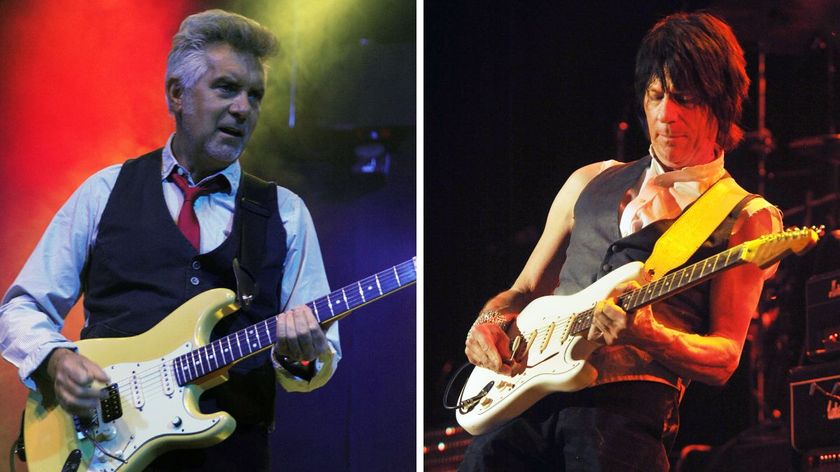
“Jeff was playing through his dodgy Marshall and didn’t like the sound. He said, ‘We’ll do it again, later on…’” Mick Rogers may be in possession of Jeff Beck’s last-ever studio recording

“I could try and recreate his vibrato for the rest of my life. It’s never going to happen. If I got to play his guitar through his rig, it’s not gonna sound like him”: Tony Iommi changed his life – now Scott Ian is playing Sabbath’s last stand

